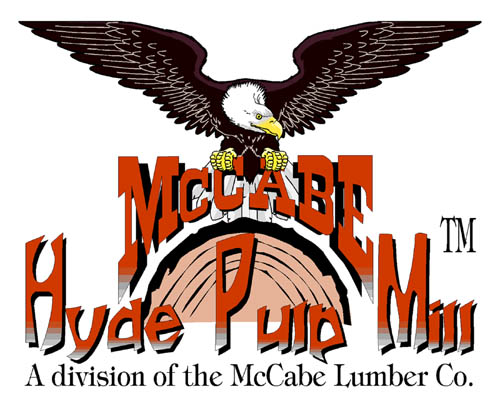
|
 |
History of
|
|
With the success of the Coon Gap Sawmill, part of the expanding John T. McCabe empire,
came the realization that not every tree in the forest is good for cutting into boards.
Some are just too small. And not every branch of those trees worthy of meeting the sawyer
would be large enough for the same fate. So management saw the potential for creating
another source of revenue, the pulp mill.
Since the best investment is with someone elseís money, an associate of McCabe, Mr. Robert Hyde, was contacted about building a pulp mill. Naturally, there were strong ties to the McCabe empire, including, but not limited to, rail access only by the McCabe Lumber Company narrow gauge railroad. And for a number of years, only McCabe equipment (MCBX reporting marks) could be seen near the mill. Construction started in 1901, and the first mill was in operation by the summer of í02. Things went well up until the forest fire of 1911. While the flames did not get closer than a half-mile to the mill, winds carried burning embers which subsequently ignited the shake roof of the original mill building. Robert was the typical thrifty Scot who spent money wisely; he carried insurance. The replacement mill was in operation in less than six months after the fire. The new mill was bigger, and more modern. And things went back to normal. Quincy, Robertís son, took over the mill operation after his fatherís retirement in 1916. He was determined that things would not change from the way his father had been doing business. He even kept old man Greeley on the payroll as foreman. But progress could not be stopped, and with it, the government grew, especially with the entry into the great war. (This war was later to be known as the War to End All Wars.) It seemed that every aspect of life needed a government agency to control it, and each agency needed to write reports. The demand for paper products increased proportionally! Standard gauge rails were laid into the mill so larger shipments could be handled. More clerks were hired and an auxiliary office was installed beside the original one. As the years went by, a new chipping shed was added, along with a larger chip storage bin. The increase in the sizes of the rail cars justified the larger pulp storage building. Always wanting to keep things as they were, Quincy refused to remove the rails from beside the main building, after all, there may be a large piece of machinery that needs to be delivered directly into the mill. So a removable bridge was built between the mill and storage building over the rails. No one ever remembers this bridge being removed, but the possibility made Quincy happy! So the Hyde Pulp Mill became a doorway to the past. Many of the processes and methods used here have not changed since the beginning of the twentieth century. Improvements came only after they were completely cost justified, and often over the loud complaints of Quincy. Hopefully, things will never change. |
Last Changed on: July 10, 2012
© 2012 -- All Rights Reserved